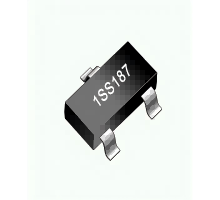Zener diodes (also known as Zener diodes) are commonly packaged in various forms, mainly selected based on their power consumption, application scenarios, and installation methods. The following are its main packaging types and characteristics, which are logically summarized as follows:

Direct insertion packaging
DO series:
DO-41: The most common and classic glass encapsulation. The shape is cylindrical, with axial leads at both ends. The power is usually small (such as 0.5W, 1W), the cost is low, and it is easy to manually weld. The volume is relatively large.
DO-15: Plastic or glass packaging, slightly larger than DO-41, typically used for 1.5W or 2W voltage regulators. It is also an axial lead.
DO-201AD: Plastic packaging, larger size, used for higher power voltage regulators (such as 3W, 5W). The shape is closer to an oval or pill shape, with axial leads.
Axial lead plastic packaging: In addition to the standard DO series, there are also some cylindrical plastic packaging similar to resistors (with metal caps sprayed on both ends), usually in dark colors (blue, black, gray, etc.), with a wide power range coverage.
Surface mount packaging
SOD series:
SOD-123: A very small plastic patch package with short Gulf wing pins at both ends. Commonly used for low-power voltage regulators (such as 0.2W, 0.3W) to save space.
SOD-323: Smaller than SOD-123, with similar pin design. Used in situations with ultra-low power or extremely limited space.
SOD-523, SOD-723: Smaller in size, close to chip level packaging.
SOD-80 (MiniMELF): Cylindrical glass surface mount package (similar to the DO-41 direct insertion surface mount version), no pins, with metal caps at both ends. Good stability, but slightly higher welding process requirements.
SOD-87 (MELF): A larger cylindrical glass patch package than SOD-80.
SMA/SMB/SMC series:
SMA (DO-214AC): Plastic rectangular patch package with large soldering wings at both ends. Suitable for medium power (such as 1W, 1.5W), with better heat dissipation than the SOD series.
SMB (DO-214AA): slightly larger in size than SMA, with higher power carrying capacity (such as 2W, 3W).
SMC (DO-214AB): The largest size in this series, used for high-power voltage regulators (such as 3W, 5W or even higher), with the best heat dissipation performance.
DFN/WDFN: Leadless plastic square flat package with exposed thermal pads at the bottom, directly attached to the PCB copper foil for heat dissipation. Used for medium to high power voltage regulators that require excellent heat dissipation (such as 1W, 1.5W, 2W), compact in size.
SOT series:
SOT-23: Small plastic three pin patch package (usually only using two of the pins). Used for low-power voltage regulators (such as 0.2W, 0.3W).
SOT-223: Plastic four pin patch package (usually with one large pin or three small pins in the middle and heat sink identification), with a large heat sink (Tab) that can be soldered onto PCB copper foil. Suitable for medium power voltage regulators (such as 1W, 1.5W, 2W).
SOT-89: Plastic three pin patch package with metal heat sink on the back (usually the middle pin), which needs to be soldered to the PCB copper foil for heat dissipation. The power level is similar to SOT-223.
SOT-363/SC-70: A very small six pin package (usually only two of them are used), used in low-power or space extremely limited situations.
Chip level packaging:
Inverted chip: Directly soldered to the substrate or PCB through bump soldering, without traditional packaging, with the smallest volume and high integration. Commonly used in special or highly integrated modules, individual voltage regulator diodes are rare.
Special/high-power packaging
TO-92: Small plastic three pin direct insertion package (similar to a low-power transistor), usually only using two pins. Used for low-power voltage regulators, with low cost.
TO-220: Classic plastic three pin (or more) package with metal backplate (can accommodate heat sink). Commonly used for high-power voltage regulators (such as 5W, 10W, 25W, 50W or even higher), requiring forced heat dissipation.
TO-247: A plastic package that is larger and has stronger heat dissipation capabilities than TO-220, used for larger power regulators.
TO-263 (D ² PAK): The surface mount version of TO-220, with large thermal pads at the bottom for high power carrying capacity.
TO-252 (DPAK): A slightly smaller chip power package than TO-263, with heat dissipation pads, used for medium power.
Select logical summary:
Power requirements: DO-41, SOD-123, SOT-23 are commonly selected for low power (<1W); Medium power (1W-3W) options include SMA, SMB, SOT-223, SOT-89, DFN; High power (>3W) must choose TO-220, TO-247, SMC, TO-263, etc.
Installation method: Traditional through-hole board with direct insertion (DO-41, DO-15, TO-220); Modern SMT boards are available in SMD packages (SOD, SMA/SMB/SMC, SOT, DFN, D ² PAK).
Space limitation: Extremely tight space, choose ultra small SMD (SOD-323, SOT-363); Choose a package with heat dissipation pads (DFN, SOT-223, TO-263) that has space and requires heat dissipation.
Heat dissipation conditions: Natural heat dissipation with optional standard packaging; TO-220/TO-247 is required for radiators; Choose SMD with heat dissipation pads (DFN, SOT-223, D ² PAK, TO-263) that rely on PCB heat dissipation.
Cost and process: DO-41 and SOT-23 are preferred for low cost; SMD is the preferred choice for automated production; Consider direct insertion for manual or repair purposes.
Core points: The packaging of a voltage regulator diode is closely related to its power processing capability, heat dissipation requirements, and installation method (through-hole vs surface mount). From the miniature SOD-323 patch to the TO-220 high-power package that requires a heat sink, the selection must be based on the actual power consumption, circuit board space, and heat dissipation conditions to ensure reliable device operation. Remember: Package size is often directly related to heat dissipation capacity, and heat dissipation capacity ultimately determines the true power that the voltage regulator can safely withstand.
